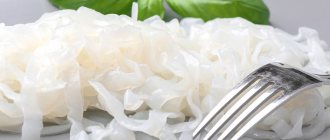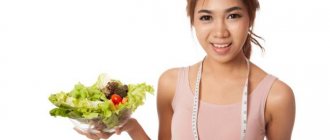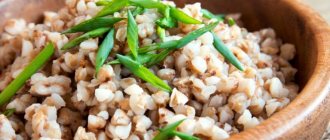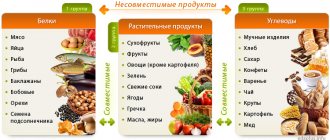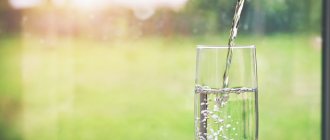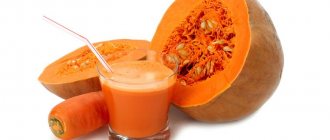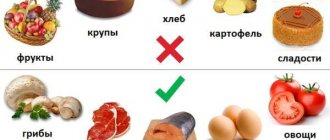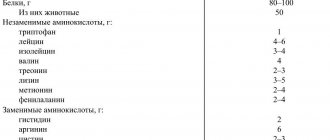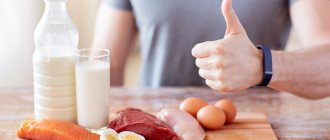The Japanese 7-day diet is the shortest version of the weight loss method of the same name: there are also schemes designed for 13 and 14 days. The main advantage of the seven-day regime is that in such a short period of time you can achieve impressive results. The average weight loss is 3-6 kg.
However, the Japanese diet for just one week is a serious test of willpower. It is not without reason that this weight loss system is considered one of the most stringent. Therefore, if, first of all, there is no psychological readiness, then you should not go on such a diet.
The essence of the Japanese diet
By following a diet for 7-13-14 days, you can achieve a quick effect, since the Japanese salt-free diet does not provide for a certain balance and consideration of proteins, fats and carbohydrates.
The menu of the Japanese diet for weight loss consists of products with a minimum content of calories, carbohydrates and without salt, seasonings, sugar and sweet confectionery, as well as any alcohol, so the diet is considered strict. This promotes the rapid breakdown of fat in the fat layer, as the body finds itself in a stressful situation and is forced to burn its own fats and calories.
The essence of the Japanese diet is high protein intake. However, protein in large quantities loads the kidneys, which leads to weakness, loss of strength, headaches, taste and unpleasant odor of acetone from the mouth. The compilers set themselves the goal of changing metabolic processes in the human body to maximize the effect of losing weight (3-10 kg) for at least 2-3 years.
Basic Rules
The basic principle of the Japanese method is strict consistency. You cannot change the amount of food or the products themselves, even if the analogues seem more attractive. The essence of the Japanese diet is to change metabolism and cleanse the body of toxins and salts. Taking these goals into account, the menu was selected, all ingredients were carefully arranged. The original Japanese scheme includes: rice (300-400 g), fruits (up to 250 g), vegetables (200-250 g), milk (100 g), one egg and 120 g of fish.
The diet is strictly limited: on the Japanese diet you are allowed to eat no more than three times a day, without snacks.
Another principle concerns prohibited products. During the diet you should not eat:
- sugar, honey;
- salt;
- alcohol;
- confectionery;
- baked goods made from white flour.
© olhaafanasieva — depositphotos.com
Rules
Japanese diet for weight loss for a period of 7, 13 or 14 days requires adherence to general rules, according to which it is necessary:
- Strictly follow the detailed menu (find below) and consume the quantity and type of products in accordance with the table. Products and meals cannot be rearranged!
- Sugar and salt are prohibited!
- Drink water! Minimum 1.5 liters per day, without gases, at room temperature. You need to drink 30-60 minutes before meals, between meals, and you should not drink food with water during meals.
- Snacks are prohibited.
- You can have your last meal before bed no later than 3 hours before bedtime.
- It is better to reduce sports during the diet, since the diet is low-carbohydrate. Opt for light exercises, stretching, morning exercises, but it’s better to return to cardio later.
- Get enough sleep! Sleep is the best source of energy and good mood.
- A smooth exit from the diet is the key to success. The correct way out is discussed below in the article.
Expected Result
Thanks to the Japanese diet, you can lose 7-10 kg in two weeks. But, it is worth remembering that an important condition for achieving the effect is maintaining proper nutrition throughout life, and not just during the period of cleansing, and then the kilograms will continue to fall until the arrow on the scale reaches the normal mark for each individual case.
Often, by exhausting themselves with diets, people bring their bodies to an anorexic state. The Japanese diet, first of all, involves normalizing weight. That is, if a person should weigh 56 kg, taking into account age, height, body type, etc., then he will not be able to lose up to 45 in this way.
Results, timing and frequency
The classic Japanese diet lasts 14 days, but a certain set of products has been created for the diet for 7 and 13 days. They adhere to one of the diets no more than once every one or two years, since diets are considered strict due to the small amount of calories and vitamins.
By following a diet
for 7 days you can lose 3-5 kg . In 13 and 14 days you can get rid of 2-7 centimeters on the waist and hips and 4-8 kg of excess weight, which depends on the person’s constitution.
Some people lose weight easily, while others gain them easily. Therefore, it is imprudent to throw a holiday for your stomach when leaving the diet. The body has an amazing memory, so it will begin to accumulate energy and fats with double strength. It is better to start losing weight and cleansing the body during the season of young vegetables and ripe fruits and berries, so that the body feels comfortable, and lovers of the Japanese diet are not tormented by thoughts of buns or ice cream, smoked and salted fish or raw smoked sausage. Only a comfortable diet will guarantee that you will not gain weight for quite a long time.
Peculiarities
Low-fat diets include low-calorie foods that help burn fat in the body. To achieve the desired result and effortlessly remove extra pounds, it is important to strictly follow all recommendations and menus. The presence of meat and dairy products supports the normal functioning of the entire body and contributes to the supply of all necessary vitamins, nutrients and microelements.
These diets allow you to eat sweet foods in small quantities, which supply glucose to the body. It will help maintain energy and vigor, avoid weakness and hunger. The basis of nutrition is dairy products, eggs, meat, vegetables, fruits, which can be stewed, boiled or baked.
Important: Fried foods are prohibited.
Authorized Products
The main products of the Japanese salt-free diet are:
- meat - chicken, beef and veal, best boiled or steamed;
- fish - low-fat varieties of fish, for example, pollock, hake, blue whiting, pollock, hake;
- dairy products - kefir, yogurt, cheese (all low-fat varieties);
- vegetables - cabbage, zucchini, carrots, eggplants, peppers, tomatoes, cucumbers. Vegetables are best eaten raw; they can be boiled or stewed;
- fruits - apples, pears, citrus fruits (orange, lemon, grapefruit), pomegranates, kiwi.
- vegetable oil;
- eggs (read about the calorie content and benefits of eggs);
- green and black tea;
- natural juices without salt and sugar;
- black coffee.
As for coffee, you will have to drink a lot of it, and this is completely unsuitable for people with heart disease and high blood pressure (blood pressure). This will also cause health problems for hypotensive patients, since they usually feel normal with a pressure of 110/70 mmHg. Art. When the pressure fluctuates slightly upward, they begin to experience vascular spasms and severe headaches. The only way out of this situation is by replacing coffee with green tea, which can be advised by your doctor.
Salt increases blood pressure and partly contributes to hypertension
A sharp reduction in sodium in food will lower your blood pressure by several points. Hypertensive patients are especially sensitive to large doses of salt, so they should not season their food generously with it.
IMPORTANT: High pressure stretches the walls of blood vessels and makes them less elastic. Vessels weaken, becoming easy targets for diseases such as stroke and heart attack.
Experts cite the influence of salt on increased blood pressure, and high blood pressure on the likelihood of strokes and heart attacks, as the main reason why it is worth controlling the amount of sodium chloride consumed.
Salt-free diets are designed to cleanse the body of salt accumulations. However, most experts do not advocate completely eliminating salt from the diet, but controlling its consumption.
Prohibited Products
Prohibited products include:
- meat - pork, lamb, as well as all kinds of sausages.
- fish - fatty fish, for example, mackerel, salmon, herring, halibut;
- fatty dairy products, as well as milk and cottage cheese;
- vegetables - mostly starchy, potatoes, corn;
- fruits - sweet fruits such as bananas, grapes, mangoes, persimmons;
- smoked and pickled foods, canned food and any semi-finished products;
- marinades and sauces;
- packaged juices;
- soda;
- alcohol;
- sugar and salt;
- flour products
- cereals
You can learn more about the diet, permitted and prohibited foods in the video:
Preparation
Before you decide to go on a diet, it's worth preparing for it. Firstly, psychologically, since according to reviews of those losing weight, the diet is strict and quite complex, and if you are not mentally prepared for it, then it is better to choose another diet. Think about the fact that after some time you will become slimmer. For motivation, you can take a photo of yourself “before” and hang it on the refrigerator. When finished, take an “after” photo and compare the results.
Secondly, you need to prepare your body and you shouldn’t go on a diet suddenly. Below are a few simple preparation rules:
- A week before starting the diet, start reducing your caloric intake, eating less sweets, salt, and more fruits and vegetable dishes.
- Start drinking at least 1.5 liters of water in advance, of which 1 glass on an empty stomach, immediately after waking up.
- The day before the diet, do a buckwheat, kefir, milk fasting day, or it is better to eat fruit or vegetable salads with kefir or lemon juice all day instead of vegetable oil.
- Before starting the diet, start taking a vitamin complex.
How to prepare for and exit a diet?
Three meals a day, a symbolic breakfast, a lot of protein and a complete absence of sweet and salty foods in the diet - such a regime will lead an unprepared body to serious stress. We recommend starting to prepare for the diet at least a week before it starts. The rules are simple: reduce your overall caloric intake and gradually eliminate prohibited foods. Remove fatty meats, carbonated drinks, baked goods, sweets and alcohol from the menu. If you drink tea with sugar, reduce the amount daily.
It is important to observe a smooth exit from restrictions. A good choice for quitting the diet would be:
- breakfast of porridge (oatmeal, buckwheat), omelet and natural juice;
- lunch of meat or chicken with rice and vegetables;
- a snack of fruit, cottage cheese or yogurt;
- light dinner of baked fish or chicken fillet, kefir.
In other words, after finishing your diet, do not rush to have a banquet about losing two clothing sizes: the extra pounds will return if fatty foods appear on your menu again. Remember the Japanese nutrition principle: moderation in everything!
© EdZbarzhyvetsky — depositphotos.com
Japanese diet menu for 7 days (per week)
The easiest way to endure the shortest diet, designed for 7 days. This diet is more suitable for a person with a relatively slim figure and a little excess weight.
Detailed menu for 7 days:
Salads can be seasoned with olive oil and fried with vegetable oil.
| Day | Breakfast | Dinner | Dinner |
| 1 | Cup of black coffee | Fresh cabbage seasoned with olive oil + 2 hard-boiled eggs 200 ml tomato juice | 200 gr. boiled or steamed fish + fresh cabbage salad |
| 2 | Cup of coffee + 1 cracker | A serving of boiled or steamed fish, fresh cabbage salad | 200-250 gr. boiled beef (do not add salt) A glass of low-fat kefir |
| 3 | Cup of coffee + 1 cracker | Fried zucchini - 400-500 gr. | 200 gr. boiled or steamed beef 2 boiled eggs Fresh cabbage salad |
| 4 | Cup of black coffee | 3 boiled carrots, grated and seasoned with olive oil Slice of hard unsalted cheese - 15 g. | Two red apples |
| 5 | 1 grated raw carrot with lemon juice | 300 gr. boiled or steamed fish A glass of tomato juice (without salt) | Two red apples |
| 6 | Cup of black coffee | 400-500 gr. boiled chicken (no salt) Cabbage or carrot salad | 2 hard-boiled eggs Fresh grated carrots with olive oil |
| 7 | Tea | 200 gr. boiled beef Any fruit (apple, orange or pear) | Dinner to choose from: any of the previous ones, with the exception of No. 3 |
It is considered fast, so in such a short time the body simply does not have time to properly cleanse itself of toxins, salts and carcinogens. Although they suggest a reduction of 4-7 kg of weight, the breakdown of fat is more likely to occur in the muscles rather than in the fat layer, that is, muscle mass will decrease, but the opposite should be true. Therefore, during these 7 days you need to do fitness so that fat is burned not only in the muscles, and muscle mass is not “lost.”
Although many authors of articles say that you only need to go for walks in the park, one does not interfere with the other. Good exercise activates blood flow and lymphatic drainage, which will saturate each cell with an additional portion of oxygen, which means adding more energy.
Is salt in the diet dangerous?
The Japanese diet requires eliminating salt from the diet. Many people give up salt without additional incentives. Salt, like sugar, has become a scarecrow product. But is it so bad that it should be excluded from the menu? According to the recommendations of the World Health Organization, the physiological norm for salt consumption for humans is 5 grams per day.
Salt, or sodium chloride, is involved in our metabolism; it is necessary to maintain the water-salt balance of the body. WHO does not recommend stopping salting food at all. But he advises limiting the consumption of foods high in salt so as not to receive a double or triple “portion” of salt per day. Foods high in salt include fast food, store-bought sauces, corn flakes, white bread, processed foods, canned foods, salted and smoked meats, and fish.
Salt-free diets like the Japanese diet are suitable for a limited number of people: patients with acute kidney inflammation, heart failure, pancreatic dysfunction, and so on. In a word, if you suddenly cannot eat salt, your doctor has probably already told you so.
At the same time, salt-free diets are also contraindicated for many. You cannot stop adding salt to your food if you are actively involved in sports, regularly undergo physical activity, or live in a hot region. Avoiding salt is contraindicated for pregnant and nursing mothers. If, while actively playing sports, you try to completely eliminate salt from your diet, this can be fraught with serious consequences, including death due to a violation of the water-salt balance. This can literally cause your heart to stop beating, so be careful.
As for promises to get rid of “excess” water in the body by giving up salt, there is a grain of truth here. Water can actually give up to 2 kg of weight. But this is not the weight you need to lose.
To lose weight, and for a long time, you need to “burn” fatty tissue, not water, so getting rid of supposedly excess water in the body is not the goal that you should set for yourself. If you regularly swell in the morning, this is a reason not to experiment with diets, but to consult a doctor. If you set the goal to “get rid of water in the body,” you can lead yourself to dehydration without losing a single gram of fat tissue.
Menu for 14 days (for 2 weeks)
When starting a diet, it is very important to prepare yourself psychologically, as described above, then there will be no nervous breakdowns or food breakdowns. If you adhere to a strictly prescribed diet, the body will not receive much stress, since the foods in the diet have a pleasant taste, even kefir and buckwheat. If you feel hungry during the first few days, you need to drink more water or green tea. After 14 days of the diet marathon, we can happily state that 5-8 kg or more never happened.
Detailed diet menu for every day:
Salads can be seasoned with olive oil, lemon juice, kefir, or fried in vegetable oil.
| Day | First week | ||
| Breakfast | Dinner | Dinner | |
| 1 | Cup of black coffee or tea | Fresh cabbage + 2 hard-boiled eggs 200 ml tomato juice | 200 gr. boiled or steamed fish + fresh cabbage salad |
| 2 | Cup of coffee + 1 cracker | A serving of boiled or steamed fish, fresh cabbage salad | 200-250 gr. boiled beef (do not add salt) A glass of low-fat kefir |
| 3 | Cup of coffee + 1 cracker | Fried zucchini - 400-500 gr. | 200 gr. boiled beef 2 boiled eggs Fresh cabbage salad |
| 4 | Cup of black coffee | 3 boiled carrots, grated and seasoned with olive oil Slice of hard unsalted cheese - 15 g. | Any fruit |
| 5 | 1 grated raw carrot with lemon juice | 300 g boiled or steamed fish A glass of tomato juice (without salt) | Any fruit |
| 6 | Cup of black coffee | 400-500 gr. boiled chicken (no salt) Cabbage or carrot salad | 2 hard-boiled eggs Fresh grated carrots with olive oil |
| 7 | Tea without sugar | 200 gr. boiled beef Any fruit | Dinner to choose from: any of the previous ones, with the exception of No. 3 |
| Second week | |||
| Breakfast | Dinner | Dinner | |
| 8 | Cup of black coffee | 400-500 gr. boiled chicken (no salt) Cabbage or carrot salad | 2 hard-boiled eggs Fresh grated carrots with olive oil |
| 9 | 1 grated raw carrot with lemon juice | 300 gr. boiled or steamed fish A glass of tomato juice (without salt) | Any fruit |
| 10 | Cup of black coffee | 3 boiled grated carrots, Slice of hard unsalted cheese -15 gr. | Any fruit |
| 11 | Cup of coffee + 1 cracker | Fried zucchini - 400-500 gr. | 200 gr. boiled beef 2 boiled eggs Fresh cabbage salad |
| 12 | Cup of coffee + 1 cracker | A serving of boiled or steamed fish, cabbage salad | 200-250 gr. boiled beef (do not add salt) A glass of low-fat kefir |
| 13 | Cup of black coffee or tea | Fresh cabbage seasoned with olive oil + 2 hard-boiled eggs 200 ml tomato juice | 200 gr. boiled or steamed fish + fresh cabbage salad |
| 14 | Cup of black coffee | A serving of boiled or steamed fish, fresh cabbage salad | 200-250 gr. boiled beef (do not add salt) A glass of low-fat kefir |
Again, you can argue with those who have a negative attitude towards dosed physical activity during a diet. Who will enjoy a loose body after losing weight and saggy folds of skin? No one! Therefore, “soft” yoga, arm exercises with light weight dumbbells (2-5 kg), gymnastics and kinesitherapy are encouraged, especially for those who are obese and overweight. The hula hoop should be your best friend for your waist, and massage for your body.
The Japanese diet for 14 days differs from the 7-day one in that the body will feel light not only due to the absence of several kilograms, but also because the process of cleansing the musculoskeletal system and organs from poisons, carcinogens, pyogenic bacteria, toxins and sand.
Also, do not overuse coffee and sweet fruits: grapes, persimmons, bananas and mangoes. And some more tips:
- It is better to boil eggs hard - they do not irritate the mucous membrane of the stomach and intestines.
- The product consumed can be eaten without restriction, unless its quantity is indicated in the diet (of course, without fanaticism!).
- It is better to replace vegetable oil in salad with lemon juice or kefir, and even better - with yogurt or whey. Instead of salt, you can also drizzle meat or fish with lemon or cranberry juice.
- Consume meat and fish only boiled, stewed, baked or steamed. You should not add extra calories with fried foods, giving your stomach a break.
Conclusion
Based on the reviews of those who have lost weight, if you follow all the rules, losing weight on the “Japanese diet” for 7 days will be easy. The food is quite high in calories, so after eating a person will feel full. This is a healthy eating method that will help you quickly lose weight and get in shape.
Reader’s story “How I lost 18 kg in 2.5 months” I’ve been fat all my life and suffered from excess weight. In clothing stores I chose size L, which by the age of 25 turned into XL and continued to grow. I can tell you for a long time how I tried to fight my 30-35 extra pounds: diets, hunger strike, physical activity, even pills and some kind of conspiracies. The effect was short-lived or absent altogether. In short, despair, depression and almost resignation to one’s enormous weight. But one day I came across... a chocolate bar that helps you lose weight! It didn’t cost me anything to try it - I love chocolates. I ordered it and ate it. And the weight crept down!! It seems like mysticism, but it's true. I began to study the issue and realized how it all works. Girls, try it! I have already lost 18 kg in 2.5 months. And I continue. It's up to you, but you don't lose anything except weight, of course. Try Choco Burn chocolate for weight loss for 147 rubles.
Japanese diet - menu for 13 days
Although this type of Japanese diet is only one day shorter than the classic one, it is not used longer, since it has its own set of products and its quantity. In 13 days you can get rid of 7-10 kg of weight, since the diet is thoroughly calculated, and the body manages to radically rebuild metabolic processes and maintain the resulting effect for another 2-3 years.
Promotes the active functioning of the gastrointestinal tract (gastrointestinal tract), cleanses the intestines, accelerates metabolic processes, an abundance of vegetables, juices, herbs and milk products. Beneficial microflora improves immunity, and drinking green tea instead of coffee with high antioxidant properties will provide the missing energy, improve muscle and brain performance, and lift your mood.
One of those losing weight shares the results in the following video:
The essence of the technique
The main rule of the Japanese diet for 7 days is to limit the consumption of foods with a lot of calories. The daily calorie content of meals for women is 1300 kcal, and for men - 1700 kcal. If a person regularly engages in sports, fitness, or is fond of strength training, the calorie content should be higher. For women - 1500 kcal, and for men - 1900 kcal.
Also, the body should receive up to 80 g of vegetable fats per day, which are contained in vegetable oil, seeds, and nuts. Up to 100 g of carbohydrates, which are found in meat, honey, eggs. It is important that the products contain a large amount of proteins. This will promote high-quality weight loss by burning the body's own fats.
Contraindications
The Japanese diet also has its contraindications, which are not recommended to be ignored. Do not use the diet for children!
You cannot test your body if you have:
- Any metabolic disease: obesity, diabetes (see diet 9 for type 2 diabetes), white muscle Keshan disease, metabolic arthritis-periarthritis (gout), hydroxypathic and pyrophosphate arthropathy, acaptonuria and ochrontotic arthropathy, osteoarthritis and rheumatism, metabolic and autoimmune disease liver: chronic hepatitis, primary biliary cirrhosis and primary sclerosing cholangitis, liver tumors, helminthiases: trematodes and echinococcosis, hereditary metabolic diseases and vitamin deficiency.
- Endocrine changes (puberty, pregnancy, lactation, menopause, after abortion).
- Severe kidney diseases (pyelonephritis and glomerulonephritis), liver (cholecystitis, hepatitis and cholelithiasis - it is better to adhere to a diet for liver diseases), heart and vascular diseases (hypertension and hypotension, coronary artery disease, vegetative-vascular dystonia).
- Any manifestation of gastritis, including the remission phase of chronic gastritis (here it is better to use a diet for gastritis).
- Physical activity and hard work.
Interesting articles: 6 petals diet: menu, results and reviews of those losing weight Buckwheat diet - menu, reviews and results
Pros and cons of the Japanese diet
The advantages of this technique include:
- good weight loss and long-term retention of results - many people who lose weight note that the results of the diet last for a long time, especially if they exit it correctly;
- excellent cleansing of the body occurs, swelling decreases, which is associated with a reduction in salt consumption;
- A fairly large list of permitted foods allows you to easily and without hunger adapt to new nutritional formats.
- A clear menu description does not require you to search for dishes and count the calories in each of them.
- the ability to choose different diet periods - 7, 13 or 14-day versions.
Minuses:
- imbalance of the diet, especially the amount of incoming fat is reduced, which leads to a deficiency of certain vitamins and minerals.
- a lack of carbohydrate foods can lead to weakness and drowsiness, so it is better to plan a diet for a low-active period of the year;
- It is important to exit the diet correctly, otherwise the lost kilos may return very quickly.
Exit rules
The process of breaking down fat and cleansing the body will continue after the diet, provided that a menu close to the diet is followed. It is better to eat meat and fish without visible fat, switch to 5-6 meals a day, separate meals and the “plate model”.
"Plate model"
- Fill half the plate with vegetables flavored with lemon juice or cranberry juice and do not replace them with anything. Don't add fatty sauce or vegetable oil to your salad to avoid turning it into a calorie bomb.
- The side dish will be placed on ½ of the second half of the plate. It also should not contain an excess of oil and can be prepared from rice, buckwheat, noodles, or boiled potatoes (100-150 g in total). The side dish can replace a piece of whole grain or rye bread.
- Lean meat or fish, seafood, a dish of eggs with mushrooms or legumes (100-120 g) will fit on the other half next to the side dish.
Why is salt called white death?
Doctors strongly advise reducing the amount of salt in food. With the development of civilization, people actually began to consume more sodium chloride. The process began back in the days of inns, when owners salted food to make customers thirsty. The saltier the food, the more income the meal and drink generated.
Today people have a special addiction to marinades, salted nuts, chips, and store-bought sauces. All of these foods contain large amounts of salt. Big, but dangerous?
A number of experts claim that salt is so harmful that a person should not consume it at all. Here are the arguments of the opponents of sodium chloride.
Theoretically, the human body excretes 25 g of salt per day through urine, sweat, and feces. Accordingly, by eating more of the substance, you will create conditions for the accumulation of salt in the body. As practice shows, in reality a person is able to separate only 3-5 g of sodium chloride through sweat, urine and feces. This fact reduces the daily dosage of salt to just a few grams. An excess of salty foods creates real salt reserves in the body, which in turn create an imbalance between potassium and sodium. Outwardly, this manifests itself in swelling of different parts of the body.
IMPORTANT: Accumulations of sodium displace other important minerals from tissues - potassium, magnesium, calcium, iron, etc.
In a healthy person, sodium reserves contribute to the development of diseases. If these diseases already exist, then excess salt additionally burdens the cardiovascular system, kidneys and other organs. For some diseases, it is recommended to reduce the intake of sodium chloride or completely remove it from the diet. Such ailments include work disorders:
- hearts
- vessels
- liver
- lungs
- blood diseases.
Reviews
Judging by the reviews of those losing weight on the Internet, the effect of using the Japanese diet for weight loss depends to a large extent on how much excess fat deposits and water exceed the norm and on the initial state of health of the person. If you combine this with strict adherence to diet, diligence and a positive attitude, then you can consider yourself a winner.
Most often in reviews, those losing weight note the difficulty of eating foods and dishes without salt and sugar, but they are quite satisfied with the result of the diet - minus 6-7 kg.
It can be noted that the advantage of the Japanese diet is the ability to obtain excellent results in weight loss and cleansing the body in such a short period of time, and with the help of a wide range of permitted products it will relieve discomfort and the feeling of a constantly empty stomach.
It is worth taking photos before and after the diet, and then take photos 2-4 weeks later. In this way, you can be sure that the diet test was successful. It will be nice to know that even after leaving it, all the parameters of the figure’s weight remained in place, unless a couple more centimeters at the waist and a few extra kilos disappeared.
Efficiency
The effect of the Japanese diet depends on many factors: a person’s health, his level of activity, discipline, and metabolic characteristics.
Of course, strict adherence to the menu and diet has an effect: people lose from 2 kg in 7 days to 10 kilograms in a full two-week cycle. However, the first weight loss is due to the removal of fluid and waste. If you see minus two kilos on the scales in the first three days of the diet, do not celebrate your victory: the weight may return.
Every diet is a temporary result. As soon as the restrictions stop, the excess weight returns. The Japanese diet retains a longer-lasting effect than its analogues, but subject to restructuring the diet and changing eating habits.
If after a diet you start bingeing on cakes and sweets, all previous efforts and restrictions will be in vain: your body weight will even exceed the initial one. It is also important to observe the general nutritional culture: eat in small portions, control the process of saturation and do not overeat. Only a healthy lifestyle and the right menu will maintain the results achieved and give the desired effect from the Japanese diet!
Recipes for healthy eating
Pork chops in batter
- 13 g Protein
- 19.7 g Fat
- 4 g Carbohydrates
- 240.2 kcal
60 min.
- #second course
- #dinner
- #roasting
- #olive oil
- #breadcrumbs
- #pork
- #dinner
- #egg
Other recipes
